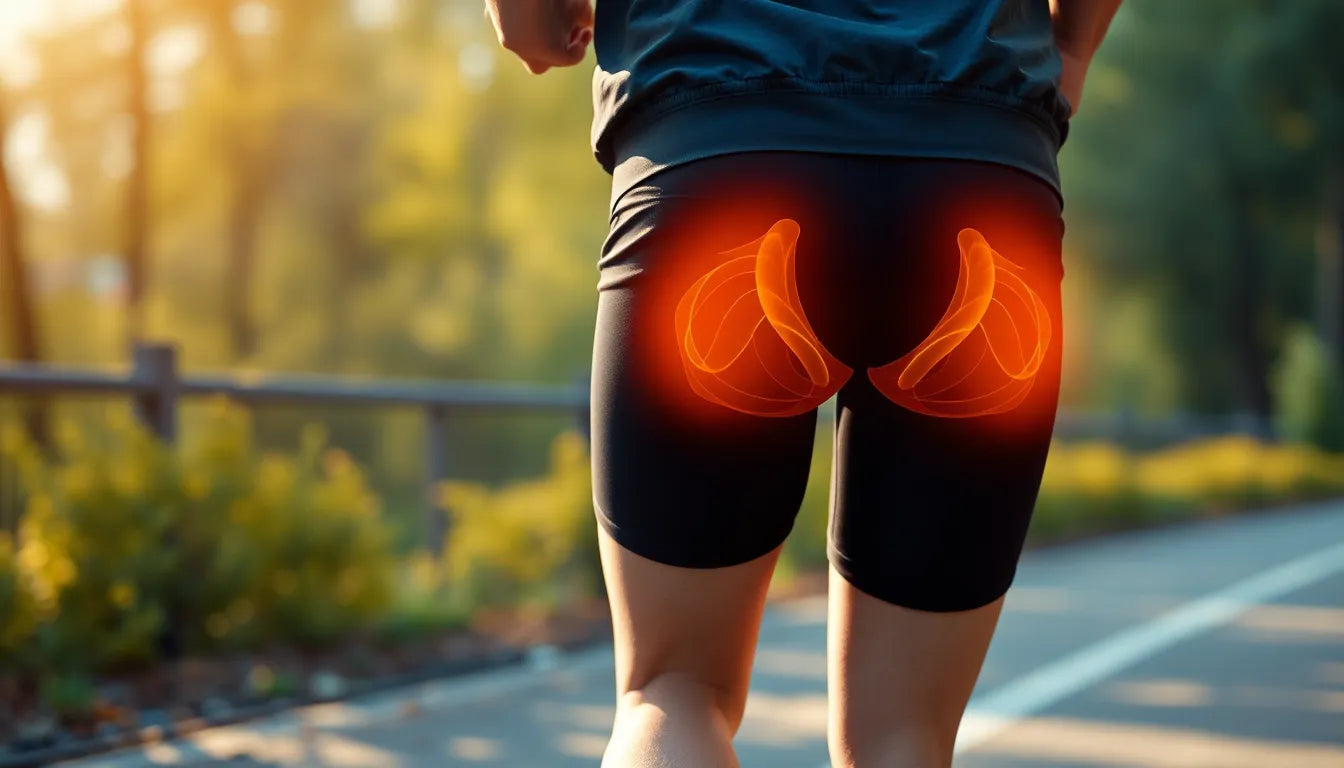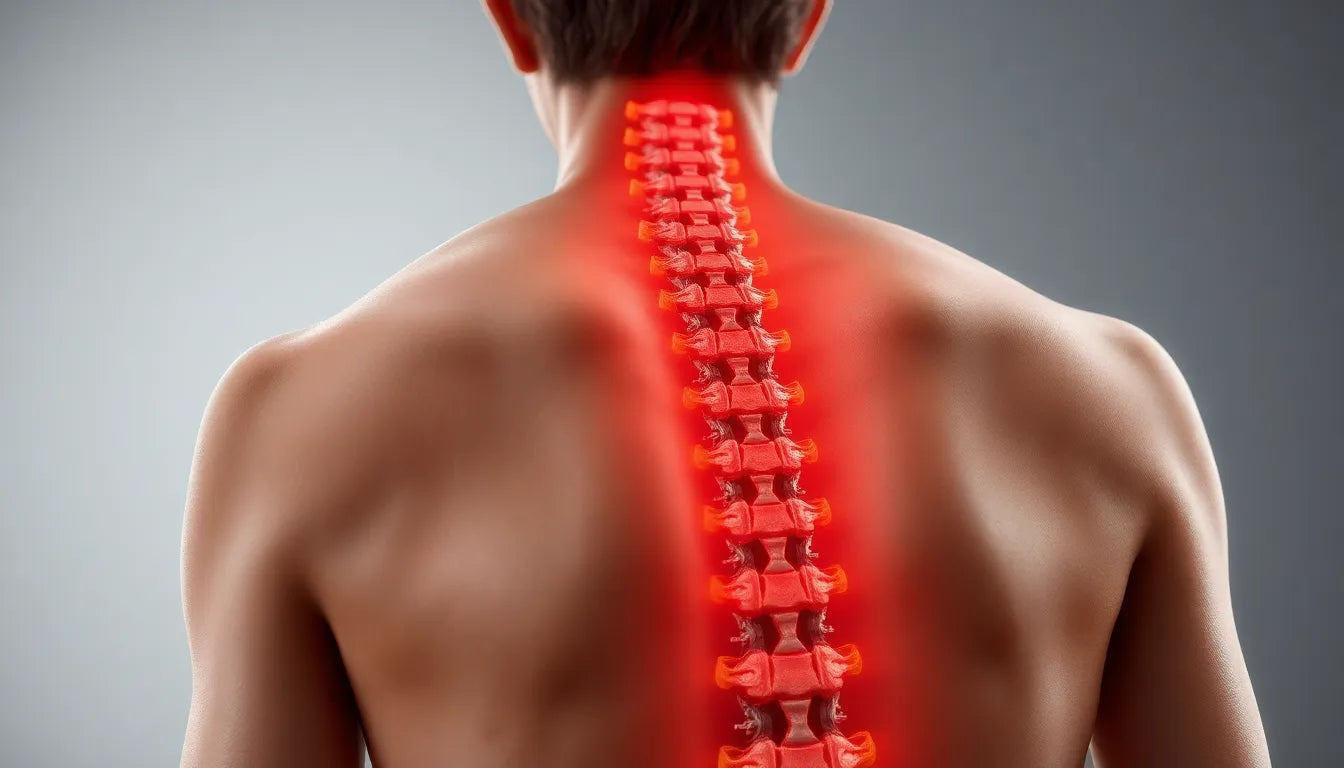Experiencing a slipped disc can be a daunting and painful ordeal. Commonly referred to as a herniated disc, this condition occurs when the soft inner gel of a spinal disc pushes through a tear in its tougher exterior. This displacement can irritate nearby nerves, leading to symptoms such as sharp pain, numbness, or weakness in an arm or leg. Slipped discs are often caused by age-related wear and tear, known as disc degeneration, but can also result from lifting heavy objects improperly or experiencing a sudden strain or trauma. The prevalence of this condition is significant, affecting many individuals at some point in their lives, and it can profoundly impact daily activities and overall quality of life.
The healing journey of a slipped disc
The road to recovery from a slipped disc is not a one-size-fits-all process. Healing time can vary widely among individuals, influenced by factors such as the severity of the herniation, the patient's age, overall health, and lifestyle choices. For many, the good news is that a significant number of herniated discs heal naturally over time without surgical intervention. However, the journey to recovery can look quite different from one person to another, with some experiencing swift relief and others facing a more prolonged healing period. Understanding this variability is crucial for setting realistic expectations and preparing for the recovery process.
Did you know?
While most people with a slipped disc start to feel better within a few weeks, complete recovery can take much longer, depending on several factors. For instance, did you know that while some individuals may find relief in just a few weeks, others may require up to a year for full recovery? This wide range underscores the importance of personalized treatment plans and patience during the healing process. By understanding the complexities of slipped disc healing time, individuals can better navigate their path to recovery and make informed decisions about their health and well-being.
Typical healing timelines for a slipped disc
When it comes to healing from a slipped disc, understanding the general timeline can help set realistic expectations. For most individuals, significant symptom improvement is typically observed within 2 to 8 weeks. During this period, pain and discomfort often diminish, allowing for a gradual return to daily activities. However, complete recovery, where the disc structure itself heals, may take a bit longer, often between 4 to 6 weeks, with some cases extending to several months.
In more severe cases, where the herniation is extensive or accompanied by motor deficits, the healing process can be prolonged. Recovery may take anywhere from 8 to 12 months, particularly if surgical intervention becomes necessary. Surgery is generally considered when symptoms persist beyond six weeks or if there are significant neurological deficits. Post-surgical recovery varies, with nerve and disc healing potentially taking several weeks to months.
Factors influencing slipped disc healing time
The duration of recovery from a slipped disc is not solely determined by the timeline but is also influenced by several critical factors. One of the primary determinants is the severity of the herniation. A more pronounced disc protrusion often requires a longer healing period, as the body needs additional time to repair the affected area.
Age and overall health also play a significant role in recovery. Younger patients generally experience faster healing due to better regenerative capabilities. Additionally, a person's lifestyle, including activity level and health habits, can impact the recovery timeline. Those who maintain a healthy lifestyle, including regular physical activity and a balanced diet, may find their healing process more efficient.
The treatment approach chosen is another crucial factor. Conservative care, which includes physical therapy and pain management, is effective for most individuals, with approximately 90% of herniated discs healing without surgery within 6 to 12 months. On the other hand, surgical intervention may be necessary for cases where conservative methods do not yield sufficient improvement.
Stages of healing a slipped disc
Understanding the stages of healing can provide a clearer picture of what to expect during recovery from a slipped disc. The acute phase, occurring within the first 1 to 14 days, is characterized by inflammation and maximum pain. During this time, rest and pain management are essential to alleviate discomfort.
As the body progresses into the recovery phase, typically between 2 to 6 weeks, there is a gradual improvement in pain and mobility. Patients often notice a reduction in neurological symptoms, allowing for increased physical activity and participation in rehabilitation exercises.
The stabilization phase, occurring between 6 to 12 weeks, marks a plateauing of improvement. During this stage, individuals can often return to normal activities, albeit with some caution to prevent re-injury. It's crucial to maintain any prescribed physical therapy routines and continue practicing good posture and ergonomics.
Finally, the long-term management phase, extending beyond three months, involves ongoing care to prevent recurrence. While most individuals experience significant improvement, minor symptoms or occasional flare-ups may persist. Continued attention to lifestyle modifications, such as ergonomic adjustments and regular exercise, is vital for maintaining spinal health and preventing future issues.
By understanding these stages and factors influencing healing time, individuals can better navigate their recovery journey from a slipped disc. Patience and adherence to recommended treatment plans are essential, and consulting healthcare professionals for personalized advice is always encouraged.
The role of lifestyle and ergonomics in slipped disc recovery
When recovering from a slipped disc, lifestyle modifications and ergonomic adjustments can play a pivotal role in facilitating healing and preventing recurrence. Incorporating ergonomic aids such as specially designed chairs, cushions, and supports can significantly improve posture and reduce strain on the spine. These tools help maintain the natural curvature of the spine, distributing pressure evenly and minimizing stress on the affected disc.

Lumbar support belt
Support and relieve your lower back. Ideal for sciatica, herniated discs, and everyday pain relief.
Posture correction is another crucial aspect of recovery. Maintaining proper alignment while sitting, standing, and moving can alleviate pressure on the spine and reduce the risk of further injury. Simple changes, like adjusting your workstation to ensure your computer screen is at eye level or using a lumbar support pillow, can make a significant difference.

Men's Posture Shirt™ - Black
Improves posture, activates muscles and can relieve pain. Patented NeuroBand™ technology.
Activity adjustments are equally important. While it is essential to remain active to promote healing, certain activities should be avoided during the recovery phase. Heavy lifting, twisting motions, and prolonged periods of sitting or standing can exacerbate symptoms. Instead, focus on low-impact exercises recommended by healthcare professionals, such as walking, swimming, or specific physical therapy exercises designed to strengthen the core and support the spine.
When to seek medical intervention
While many individuals recover from a slipped disc with conservative care, there are instances where medical intervention becomes necessary. Persistent pain that does not improve within six weeks, severe pain that interferes with daily activities, or neurological symptoms such as numbness, tingling, or weakness in the limbs are signs that warrant professional evaluation.
Surgical intervention may be considered if conservative treatments fail to provide relief or if there are significant neurological deficits. Surgery aims to relieve pressure on the affected nerve, improve function, and alleviate pain. Post-surgical recovery varies but typically involves several weeks to months of rehabilitation to restore mobility and strength.
Frequently Asked Questions
How long does it take for a slipped disc to heal naturally?
Most individuals see improvement in 4-6 weeks, but complete recovery can take longer depending on the severity of the herniation and individual health factors.
Can a slipped disc heal without surgery?
Yes, around 90% of slipped disc cases heal with conservative care, such as physical therapy and pain management, within 6-12 months.
What activities should I avoid with a slipped disc?
During the acute phase, avoid heavy lifting, twisting motions, and prolonged sitting or standing. These activities can exacerbate symptoms and delay healing.
How can I speed up recovery from a slipped disc?
Engage in physical therapy, maintain good posture, and use ergonomic aids to support healing. Staying active with low-impact exercises can also promote recovery.
Is it normal to have flare-ups after recovery?
Occasional flare-ups can occur, but consistent management and lifestyle adjustments, including ergonomic practices and regular exercise, can minimize these episodes.
In conclusion, navigating the path to recovery from a slipped disc requires patience and adherence to recommended treatment plans. By understanding the factors that influence healing time and making necessary lifestyle changes, individuals can effectively manage their recovery journey. It is always advisable to consult healthcare professionals for personalized advice and to consider lifestyle changes that support spinal health and prevent future issues.
Källor
- StrengeSpine. (n.d.). "Can a Herniated Disc Heal Itself?" StrengeSpine Insights.
- Spine MD. (n.d.). "Signs a Herniated Disc Is Healing." Spine MD Insights.
- Rajasekaran, S., et al. (2014). "The natural history of lumbar disc herniation." Journal of Orthopaedic Surgery.
- Chiu, C.C., et al. (2015). "The probability of spontaneous regression of lumbar herniated disc: a systematic review." Clinical Rehabilitation.
- Cleveland Clinic. (n.d.). "Herniated Disk." Cleveland Clinic.
- Mayo Clinic. (n.d.). "Herniated Disk: Diagnosis & Treatment." Mayo Clinic.
- McCulloch, J.A. (2010). "Lumbar herniated disc." Annals of The Royal College of Surgeons of England.


















